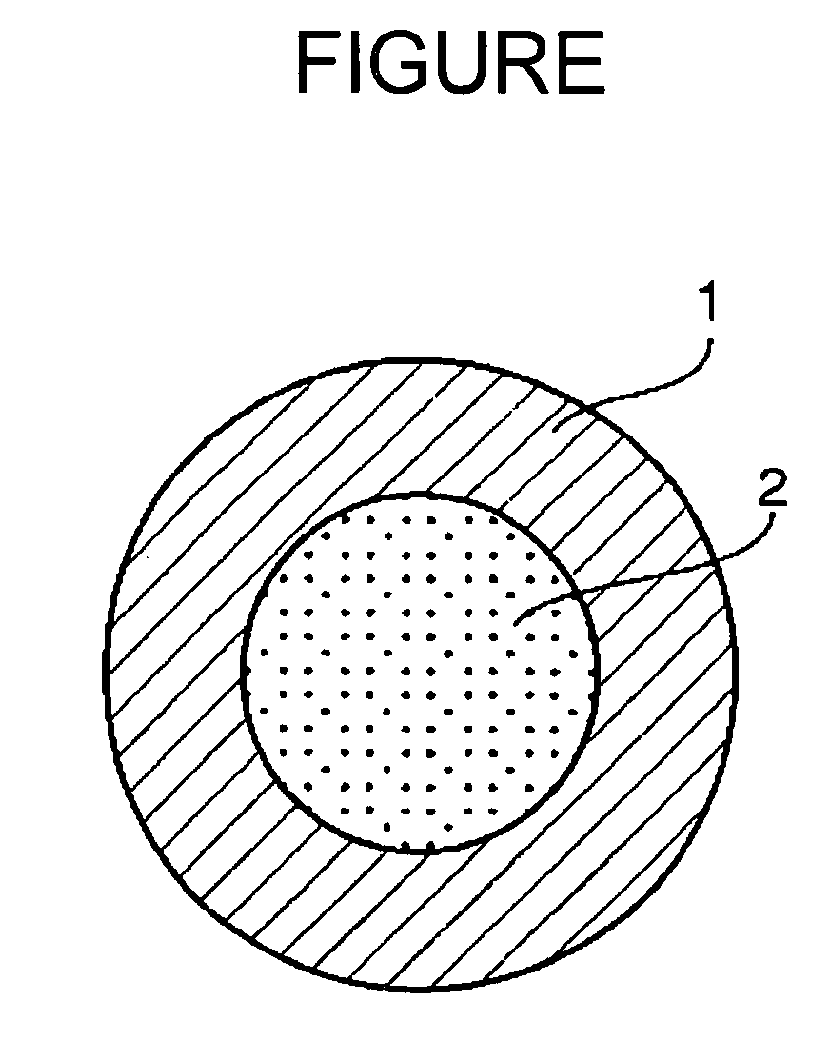Method for Producing Nb3Sn Superconductive Wire Material Using Powder Process
- Summary
- Abstract
- Description
- Claims
- Application Information
AI Technical Summary
Benefits of technology
Problems solved by technology
Method used
Image
Examples
example 1
[0026] In an Ar gas atmosphere, powdered Ta and powdered Sn, each having a grain diameter passing through 350 mesh, were weighed by an electronic balance so that the ratio of Ta to Sn was 6 to 5 (atomic ratio). Those powdered materials were mixed together by a V-blender for 30 minutes. This mixed powder was heat-treated at 950° C. for 10 hours under a vacuum condition, so that a Ta—Sn compound was formed. In addition, as for powder No. 1 shown in the following Table 1, two mass percent of powdered Cu was further added at the stage of the above mixed powder.
[0027] After the Ta—Sn compound thus obtained was coarsely pulverized, it was further pulverized for one hour in an Ar atmosphere using an automatic mortar mixer, so that a powdered Ta—Sn compound having a grain diameter of 75 Mm or less was obtained. The powder thus obtained is listed in Table 1 as the “powdered Sn compound”.
[0028] To the powdered Sn compound obtained as described above powdered Sn and powdered Cu, in an amount...
PUM
| Property | Measurement | Unit |
|---|---|---|
| Percent by mass | aaaaa | aaaaa |
| Percent by mass | aaaaa | aaaaa |
| Volume | aaaaa | aaaaa |
Abstract
Description
Claims
Application Information
 Login to View More
Login to View More - R&D
- Intellectual Property
- Life Sciences
- Materials
- Tech Scout
- Unparalleled Data Quality
- Higher Quality Content
- 60% Fewer Hallucinations
Browse by: Latest US Patents, China's latest patents, Technical Efficacy Thesaurus, Application Domain, Technology Topic, Popular Technical Reports.
© 2025 PatSnap. All rights reserved.Legal|Privacy policy|Modern Slavery Act Transparency Statement|Sitemap|About US| Contact US: help@patsnap.com


